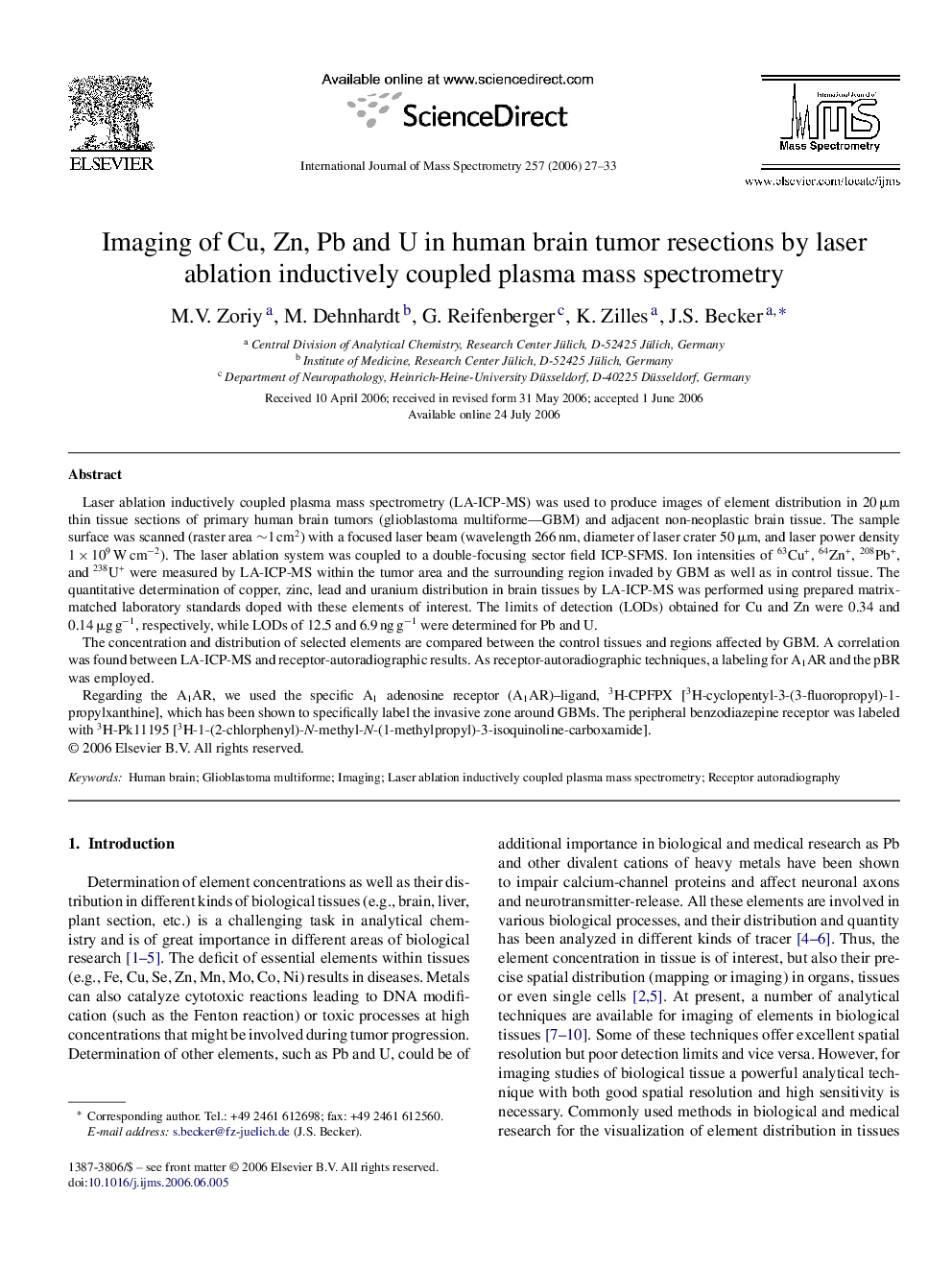| Article ID | Journal | Published Year | Pages | File Type |
|---|---|---|---|---|
| 1195019 | International Journal of Mass Spectrometry | 2006 | 7 Pages |
Laser ablation inductively coupled plasma mass spectrometry (LA-ICP-MS) was used to produce images of element distribution in 20 μm thin tissue sections of primary human brain tumors (glioblastoma multiforme—GBM) and adjacent non-neoplastic brain tissue. The sample surface was scanned (raster area ∼1 cm2) with a focused laser beam (wavelength 266 nm, diameter of laser crater 50 μm, and laser power density 1 × 109 W cm−2). The laser ablation system was coupled to a double-focusing sector field ICP-SFMS. Ion intensities of 63Cu+, 64Zn+, 208Pb+, and 238U+ were measured by LA-ICP-MS within the tumor area and the surrounding region invaded by GBM as well as in control tissue. The quantitative determination of copper, zinc, lead and uranium distribution in brain tissues by LA-ICP-MS was performed using prepared matrix-matched laboratory standards doped with these elements of interest. The limits of detection (LODs) obtained for Cu and Zn were 0.34 and 0.14 μg g−1, respectively, while LODs of 12.5 and 6.9 ng g−1 were determined for Pb and U.The concentration and distribution of selected elements are compared between the control tissues and regions affected by GBM. A correlation was found between LA-ICP-MS and receptor-autoradiographic results. As receptor-autoradiographic techniques, a labeling for A1AR and the pBR was employed.Regarding the A1AR, we used the specific A1 adenosine receptor (A1AR)–ligand, 3H-CPFPX [3H-cyclopentyl-3-(3-fluoropropyl)-1-propylxanthine], which has been shown to specifically label the invasive zone around GBMs. The peripheral benzodiazepine receptor was labeled with 3H-Pk11195 [3H-1-(2-chlorphenyl)-N-methyl-N-(1-methylpropyl)-3-isoquinoline-carboxamide].
